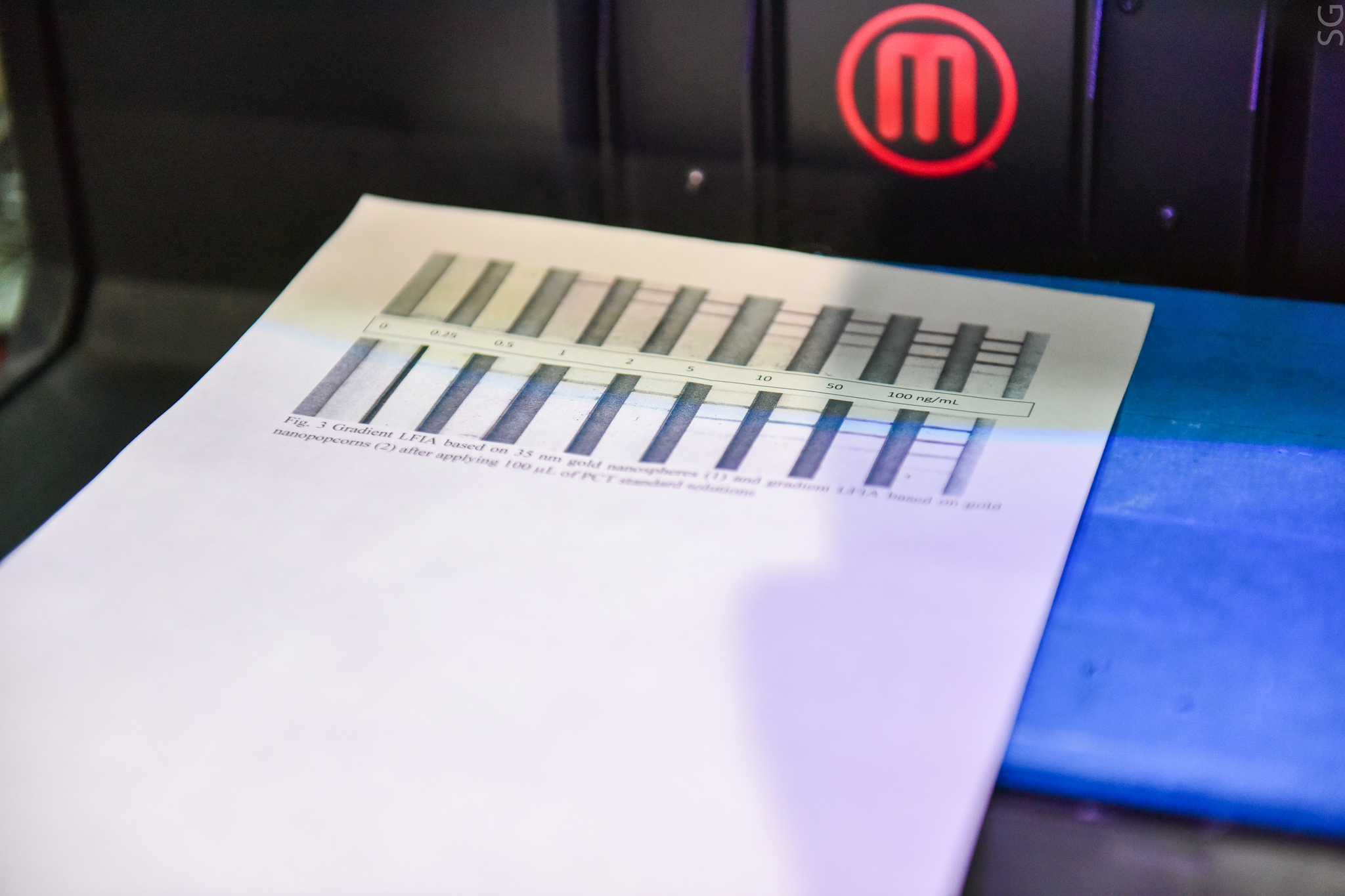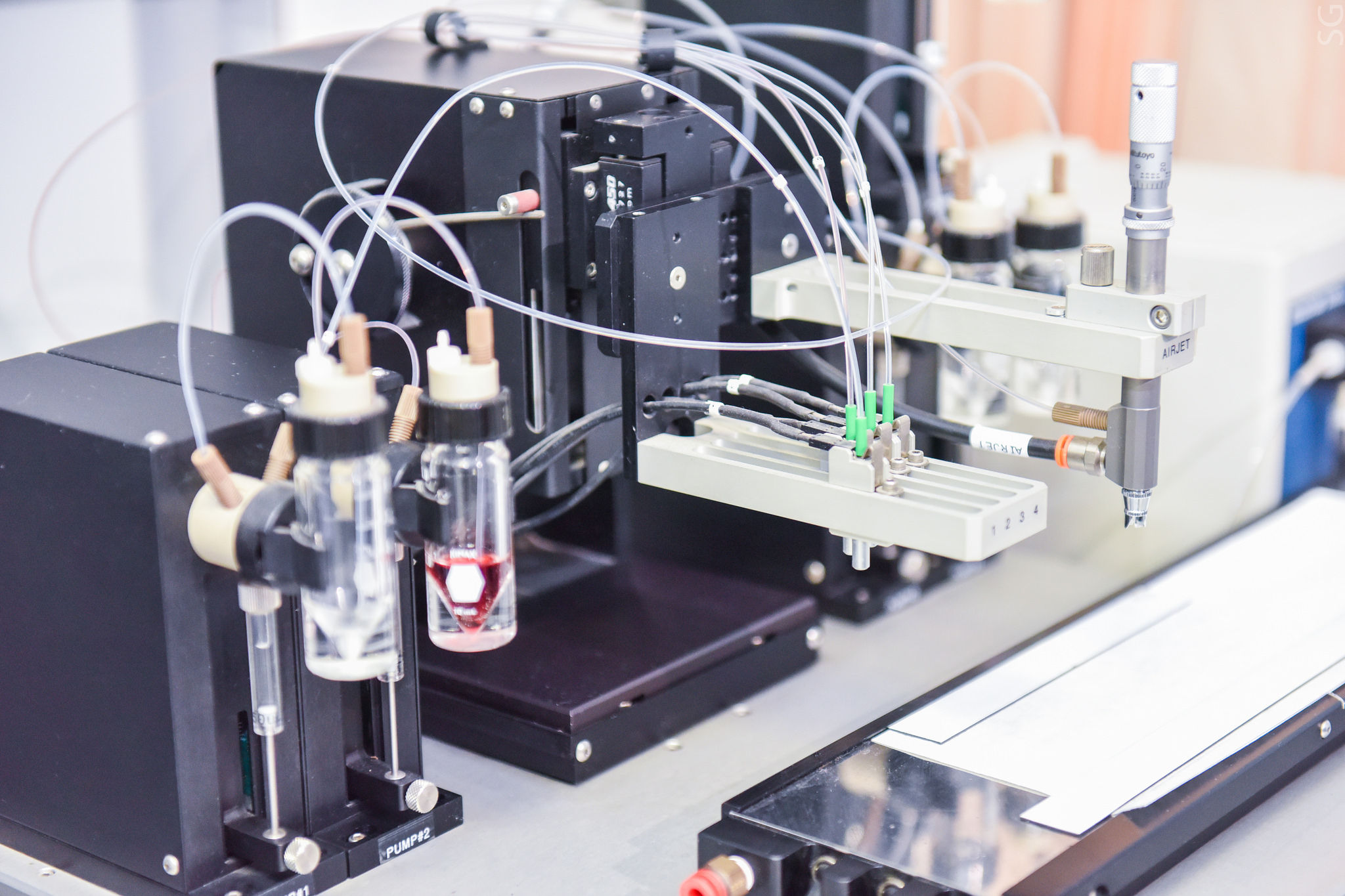Heart attack and sepsis in 10 minutes
Russian folk wisdom about the relationship between a peasant and thunder appeared not in an empty place, but in a place very full of tragedies. A place for our man prayed and almost beloved. Basically, personal disasters are associated with advanced diseases. And this is one of the reasons why such a topic arose.

This is a method by which you can quickly (including at home) determine the early stage of acute myocardial infarction, sepsis, gestational age (!), And distinguish between viral and bacterial infections. All tests are based on the immunochromatographic system of qualitative and quantitative rapid analysis developed at the NUST MISiS. The most famous of these systems is a pregnancy test.

“We have improved the technology used for quick tests: now you can not only detect the presence of certain substances in the body, but also visually determine their critical quantity,” says Alexander Osipov, senior researcher at the Department of Functional Nanosystems and High-Temperature Materials, NUST “MISiS”. “To get a quantitative result, you need to apply one or more drops of the bio-sample to the test strip and just count the number of colored test lines that appear in the analytical area of the device.”

As Osipov explained, it is usually necessary to use special portable tools to get quantitative results and make a diagnosis. For example, a reflective photometer that allows you to record the intensity of the staining of the test area. And sometimes the speed of diagnosis is extremely important to start therapy. Especially in cases of acute myocardial infarction, sepsis or malignant neoplasms. To begin the correct treatment, you need to know the concentration of the marker. And now it can be measured by simply dropping a drop on the analyzer.

“The biological fluid flows onto the segment of the test strip containing the conjugate (hybrid molecule) labeled with gold nanoparticles or quantum dots of antibodies, captures it and moves along with it along the analytical membrane. - the expert explained. - The resulting labeled immunocomplexes pass through several transverse lines containing second antibodies adsorbed in increasing concentrations against the antigen being detected. Due to the specific “antibody-antigen” interactions, labeled immunocomplexes are bound on the carrier, which is visually recorded as colored transverse test lines. The higher the content of the analyte in the sample, the greater the number of lines appear in the analytical zone. This approach when analyzing, for example, human chorionic gonadotropin in the urine allows you to determine not only the presence,

The system has already worked on procalcitonin. This substance is a marker for sepsis. And also on the protein that binds fatty acids (s-BSAI), because with damage to the myocardium (heart muscle), the concentration of s-BSAI in the blood gradually increases. And if the heart attack has moved to a later stage, it can be detected using a marker on troponin I. “Our rapid test allows us to determine the latent forms of heart attack,” Osipov said.
It may well be that in this case, self-diagnosis will help save many lives. And over time, it will become as common as measuring pressure and temperature, because it is easy to carry out not only in an ambulance, for example, but also at home. In the meantime, while a batch of experimental test samples are currently undergoing preclinical trials, do not forget to be regularly examined by doctors. Stronger than you, nobody needs your health.

This is a method by which you can quickly (including at home) determine the early stage of acute myocardial infarction, sepsis, gestational age (!), And distinguish between viral and bacterial infections. All tests are based on the immunochromatographic system of qualitative and quantitative rapid analysis developed at the NUST MISiS. The most famous of these systems is a pregnancy test.

“We have improved the technology used for quick tests: now you can not only detect the presence of certain substances in the body, but also visually determine their critical quantity,” says Alexander Osipov, senior researcher at the Department of Functional Nanosystems and High-Temperature Materials, NUST “MISiS”. “To get a quantitative result, you need to apply one or more drops of the bio-sample to the test strip and just count the number of colored test lines that appear in the analytical area of the device.”

As Osipov explained, it is usually necessary to use special portable tools to get quantitative results and make a diagnosis. For example, a reflective photometer that allows you to record the intensity of the staining of the test area. And sometimes the speed of diagnosis is extremely important to start therapy. Especially in cases of acute myocardial infarction, sepsis or malignant neoplasms. To begin the correct treatment, you need to know the concentration of the marker. And now it can be measured by simply dropping a drop on the analyzer.

“The biological fluid flows onto the segment of the test strip containing the conjugate (hybrid molecule) labeled with gold nanoparticles or quantum dots of antibodies, captures it and moves along with it along the analytical membrane. - the expert explained. - The resulting labeled immunocomplexes pass through several transverse lines containing second antibodies adsorbed in increasing concentrations against the antigen being detected. Due to the specific “antibody-antigen” interactions, labeled immunocomplexes are bound on the carrier, which is visually recorded as colored transverse test lines. The higher the content of the analyte in the sample, the greater the number of lines appear in the analytical zone. This approach when analyzing, for example, human chorionic gonadotropin in the urine allows you to determine not only the presence,

The system has already worked on procalcitonin. This substance is a marker for sepsis. And also on the protein that binds fatty acids (s-BSAI), because with damage to the myocardium (heart muscle), the concentration of s-BSAI in the blood gradually increases. And if the heart attack has moved to a later stage, it can be detected using a marker on troponin I. “Our rapid test allows us to determine the latent forms of heart attack,” Osipov said.
It may well be that in this case, self-diagnosis will help save many lives. And over time, it will become as common as measuring pressure and temperature, because it is easy to carry out not only in an ambulance, for example, but also at home. In the meantime, while a batch of experimental test samples are currently undergoing preclinical trials, do not forget to be regularly examined by doctors. Stronger than you, nobody needs your health.
